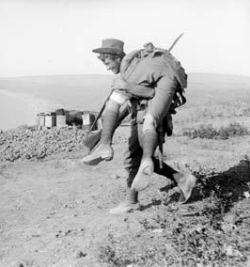
|
Australian units were sent first to Egypt for training, some participated
in the defense of Suez. The first big involvement was Gallipoli in 1915,
where they proved their military value. AIF arrived in France in 1916 where
it took part at a series of campaigns on the Western Front still 1918.
Under Australian general John
Monash
from may 1918, Australians led Allied counteroffensives in the central
sector of the front from Hamel until just before the Armistice. Australian
Cavalry Brigades first fought dismounted in Gallipoli and France and were
then transferred to Palestine in 1917-1918 and played a vital role in Allenby’s
victories. |
